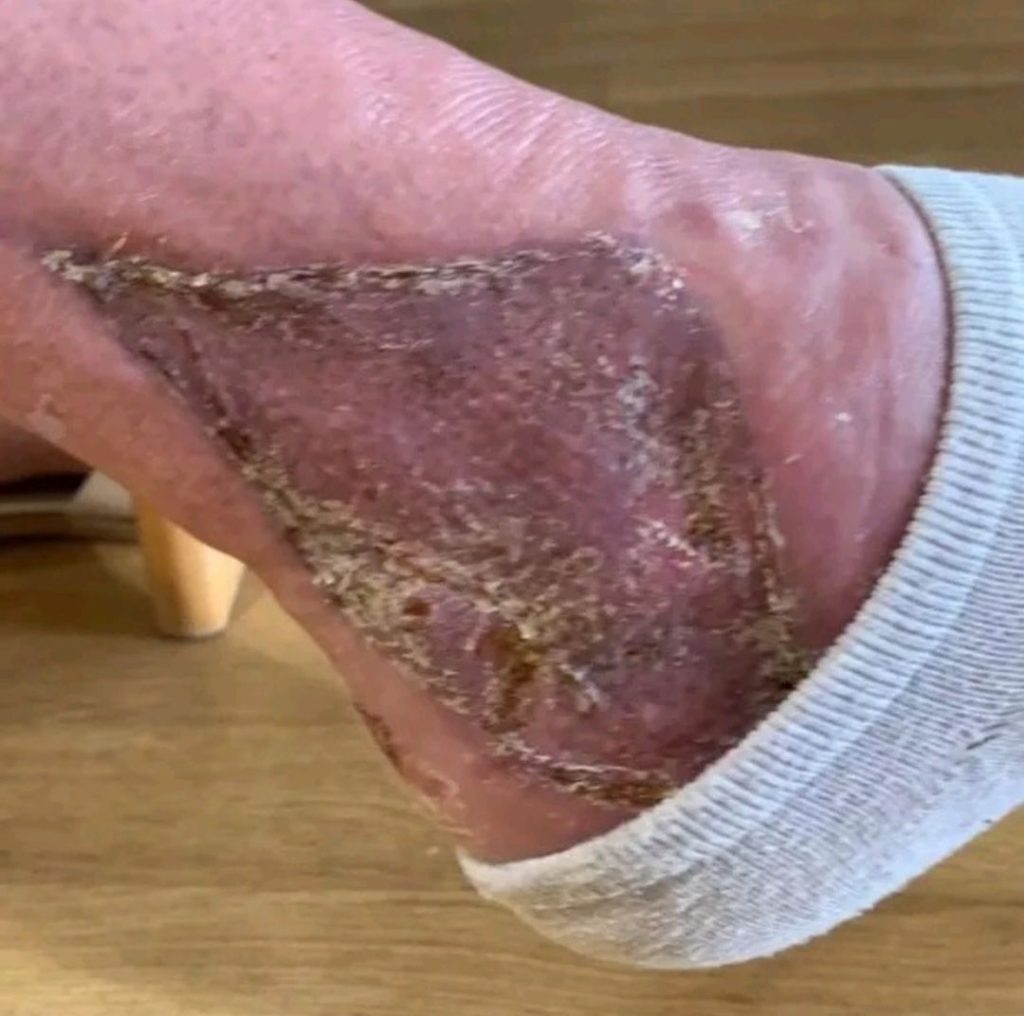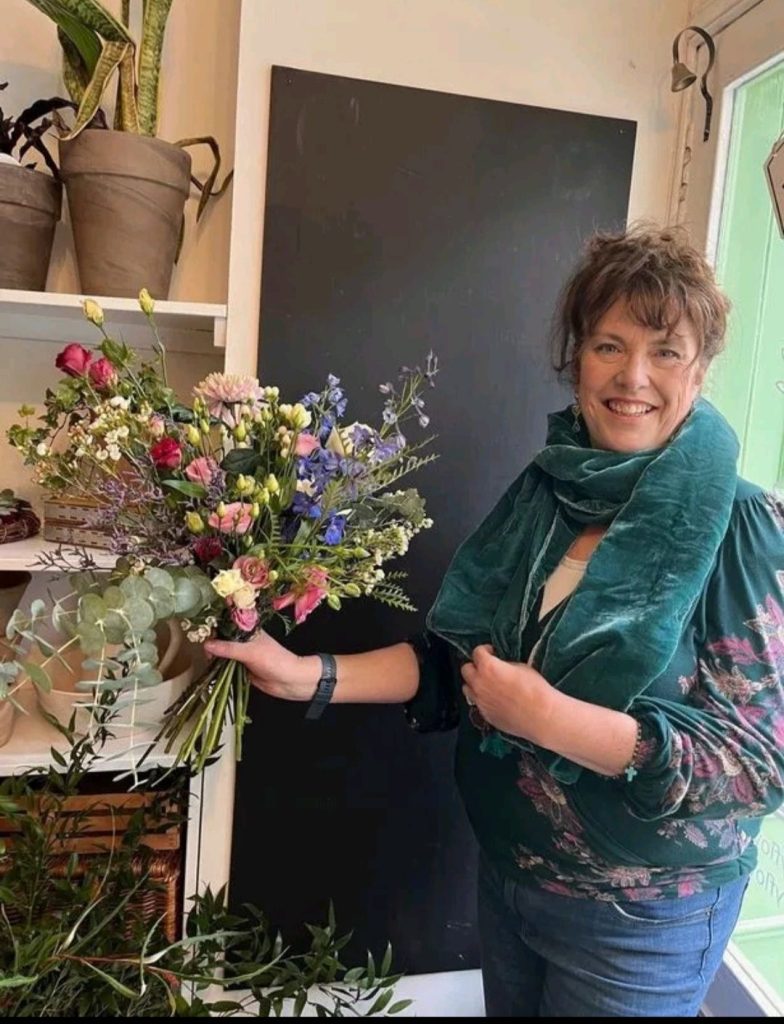
Louise Fawcett, 58, was tending to her garden in Chesterfield, Derbyshire, in April when she likely sustained a small cut on her right foot from debris.
As a passionate gardener, she is grateful to be alive after contracting a flesh-eating infection while working in her flower beds. Louise, wearing slip-on sandals, believes the minor cut on her foot allowed the infection to enter her bloodstream. Following days of intense pain and swelling, she was diagnosed with necrotizing fasciitis.
Surgeons fought to remove the infection by excising the affected tissue. Louise has no memory of her three days in intensive care. After undergoing seven surgeries, including a skin graft from her thigh, and spending several weeks in the hospital, she was finally discharged and is now relearning to walk.

She suspects the infection entered through the small cut on her foot caused by garden debris. Louise, a vision rehabilitation officer from Chesterfield, Derbyshire, recounted her ordeal, saying, “I must have gotten a tiny cut. I think it came from the soil.” “My husband, Mark, has been busy with our garden, which is full of rubble. I’m unfortunate to have gotten it but lucky to be alive. It’s unbelievable it happened in such a suburban area as Chesterfield.”
Louise didn’t notice anything wrong with her foot until the following day, April 21. She recalled, “It was quite swollen, and I started to feel very unwell. I couldn’t wear shoes for Mark’s birthday dinner. I couldn’t put any weight on it.” Her discomfort intensified over the weekend, leading to a visit to her GP, who suspected cellulitis—a potentially severe infection—and prescribed antibiotics.
Advised to elevate her foot and return if symptoms persisted, Louise observed the next morning, “The ankle looked like it had a port wine birthmark. It was very purple. I thought it was sepsis.” Her husband, Mark, 59, a train driver, promptly took her to Chesterfield Royal Hospital, where blood tests were performed.

A nurse familiar with the symptoms of a rare flesh-eating infection recognized similar signs in Louise. She described the harrowing experience: “They took me into a small room. The redness was spreading, changing before their eyes. They feared I might lose my life or my leg.”
Louise was rushed into surgery to combat the flesh-eating bacteria. She spent three days in intensive care—a period she doesn’t remember. She underwent six operations to remove the infection before her condition stabilized. After an additional three weeks in the hospital, she received a skin graft from her thigh at Northern General, Sheffield, in May.
Discharged on May 16, 2024, Louise received the good news last week that her skin graft was successful. She has begun physiotherapy and uses crutches to aid her mobility. Overwhelmed with relief, she said, “They told me it healed. I was crying with joy. I’m here. I’m glad to be alive.” To keep her ankle at a 90-degree angle while sitting, Louise uses a brace.

She added, “I have to bathe my foot. I can’t look at it. It doesn’t feel like my foot.” “It feels like a mannequin’s foot,” she further explained. Due to her health ordeal, Louise had to delay the launch of her business, Sight Loss Solutions. However, she is now set to open her practice on June 16, 2024, aiming to provide individual and group sessions and support for carers of people experiencing sight loss.




